Introduction
Chinese cabbage, known as Cai Tai in Mandarin, is a leafy vegetable celebrated for its tender stems, crisp leaves, and subtle sweetness. Stir-frying Cai Tai is a cornerstone of Chinese home cooking, a technique that transforms simple ingredients into a dish bursting with flavor and texture. Whether you’re a novice cook or a seasoned chef, mastering the art of stir-frying this vegetable opens doors to authentic Asian flavors. This article delves into the nuances of selecting, preparing, and cooking Cai Tai to perfection, ensuring a dish that is both visually appealing and deliciously satisfying.
Understanding Cai Tai: The Star Ingredient
Cai Tai, or Chinese flowering cabbage, belongs to the Brassica rapa family, closely related to bok choy and napa cabbage. Its distinctive features include slender, crunchy white stems and vibrant green leaves, often adorned with tiny yellow flowers when mature. The vegetable’s mild, slightly peppery taste makes it a versatile canvas for bold flavors, while its high water content ensures a refreshing crunch. When stir-fried, Cai Tai retains its texture, making it a favorite in quick-cooking dishes.
Selecting the Freshest Cai Tai
The foundation of a great stir-fry lies in ingredient quality. When choosing Cai Tai, look for crisp, unblemished stems and vibrant leaves. Avoid wilted or yellowing specimens, as these indicate age or improper storage. Fresh Cai Tai should feel heavy for its size, a sign of retained moisture. If possible, opt for locally sourced produce, as it tends to be fresher and more flavorful.
Essential Ingredients and Tools
To elevate your stir-fry, gather the following:
- Cai Tai: 1 large bunch (approximately 500 grams), trimmed and cleaned.
- Aromatics: Garlic (3 cloves, minced), ginger (1-inch piece, grated), and dried red chilies (optional, for heat).
- Protein (optional): Tofu, shrimp, or sliced pork for added richness.
- Seasonings: Light soy sauce, oyster sauce (or vegetarian stir-fry sauce), sesame oil, and a pinch of sugar.
- Cooking Oil: Peanut or vegetable oil for high-heat cooking.
- Equipment: A well-seasoned carbon steel wok or a large skillet, tongs, and a sharp knife.
Preparation: The Key to Crisp-Tender Perfection

- Cleaning: Rinse Cai Tai under cold water, gently separating the leaves to remove dirt. Pat dry thoroughly to prevent sogginess during cooking.
- Trimming: Cut off the base of the stems, then separate the leaves from the thicker stems. Slice the stems diagonally into ½-inch pieces for even cooking. Tear the leaves into bite-sized portions.
- Mise en Place: Prepare all ingredients before heating the wok. Stir-frying is a rapid process, and having everything ready ensures even cooking.
The Stir-Frying Technique: Heat, Speed, and Precision
Stir-frying is a dance of heat and motion. Follow these steps for flawless execution:
-
Heating the Wok:
- Place your wok over high heat until it begins to smoke. This step, known as “seasoning the wok,” ensures non-stick cooking and imparts a subtle smokiness.
- Add 2 tablespoons of oil, swirling to coat the surface. The oil should shimmer but not smoke.
-
Cooking Aromatics:
Reduce the heat to medium-high and add garlic, ginger, and chilies (if using). Stir-fry for 15–20 seconds until fragrant but not browned. Overcooking aromatics can introduce bitterness.
-
Adding the Stems:
- Toss in the sliced Cai Tai stems first, as they require longer cooking. Stir-fry for 2–3 minutes, using a spatula to toss continuously. The stems should develop a slight translucence.
-
Incorporating the Leaves:
Add the leaves and any protein (if using). Increase the heat to high and stir-fry for an additional 2 minutes. The leaves will wilt but retain their vibrant color.
-
Seasoning:
- Drizzle 1 tablespoon of light soy sauce, 1 teaspoon of oyster sauce, and a pinch of sugar around the wok’s edges. This technique, called “flaming,” caramelizes the seasonings for depth.
- Toss gently to coat, ensuring even distribution.
-
Finishing Touches:
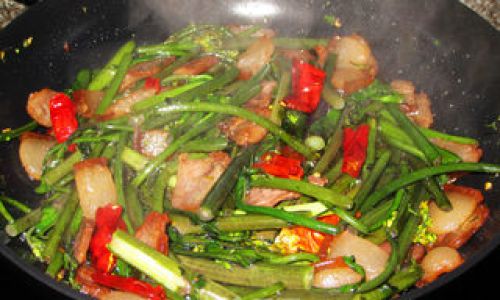
Remove from heat and drizzle with sesame oil. A sprinkle of toasted sesame seeds or chopped scallions adds texture and visual appeal.
Mastering Texture and Flavor
- Crisp-Tender Balance: Overcooking Cai Tai results in mushiness. Aim for stems that offer resistance when bitten and leaves that are vivid green.
- Flavor Layering: Introduce acidity with a splash of rice vinegar or brightness with a garnish of cilantro.
- Protein Pairings: Marinate proteins in soy sauce and cornstarch for 10 minutes before cooking to lock in moisture.
Regional Variations and Customizations
- Sichuan-Style: Add Sichuan peppercorns and black vinegar for a numbing, tangy twist.
- Cantonese Simplicity: Omit chili and serve with a side of steamed rice for a mild, comforting meal.
- Vegan Adaptation: Substitute oyster sauce with mushroom-based stir-fry sauce and add crispy tofu cubes.
Troubleshooting Common Pitfalls
- Soggy Vegetables: Ensure the wok is sufficiently preheated. Excess moisture from un-patted-dry Cai Tai can steam rather than stir-fry.
- Uneven Cooking: Slice stems and leaves separately to control doneness. Cook stems first, then leaves.
- Bland Flavor: Enhance umami with a pinch of MSG or a dash of fish sauce (for non-vegetarians).
Health Benefits of Cai Tai
Beyond its culinary appeal, Cai Tai is a nutritional powerhouse:
- Rich in Vitamins: High in vitamin C (boosts immunity) and vitamin K (supports bone health).
- Dietary Fiber: Aids digestion and promotes satiety.
- Antioxidants: Compounds like sulforaphane may reduce inflammation.
Conclusion: The Joy of Stir-Frying
Stir-frying Cai Tai is more than a cooking method—it’s a celebration of simplicity and speed. With practice, you’ll learn to gauge heat, toss with precision, and balance flavors. Experiment with add-ins like fermented black beans or cashews for texture. Remember, the best stir-fries are those cooked with intuition, so don’t hesitate to adjust seasonings to taste. Whether served as a side dish or a vegetarian main, perfectly cooked Cai Tai embodies the essence of Chinese home cooking: fresh, vibrant, and utterly delicious.
Final Tip: Invest in a quality wok and a pair of long tongs. These tools will become your allies in creating restaurant-worthy stir-fries at home. Happy cooking!

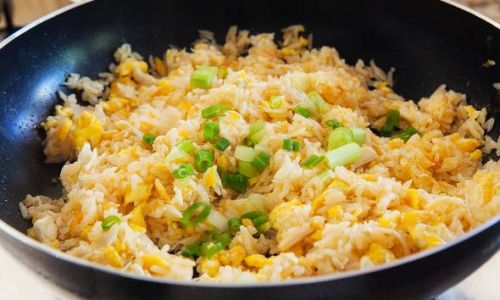
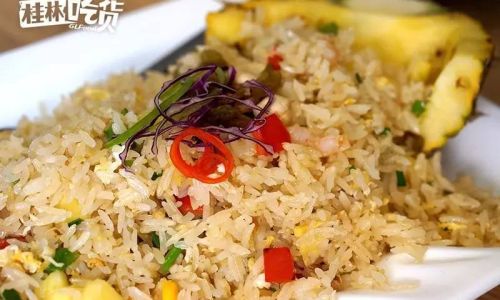
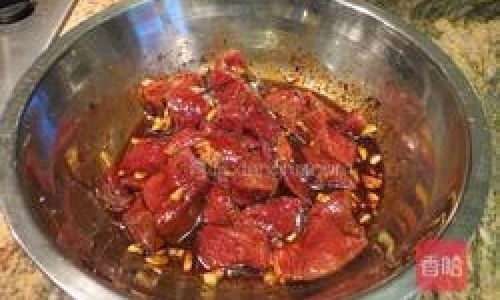
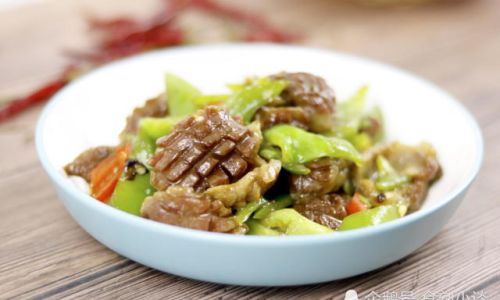
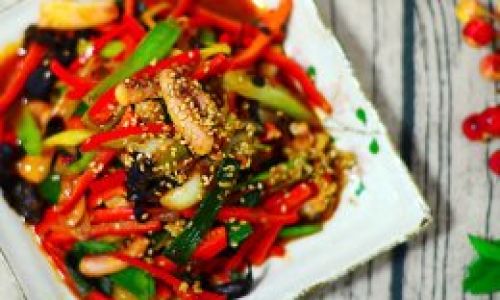
0 comments